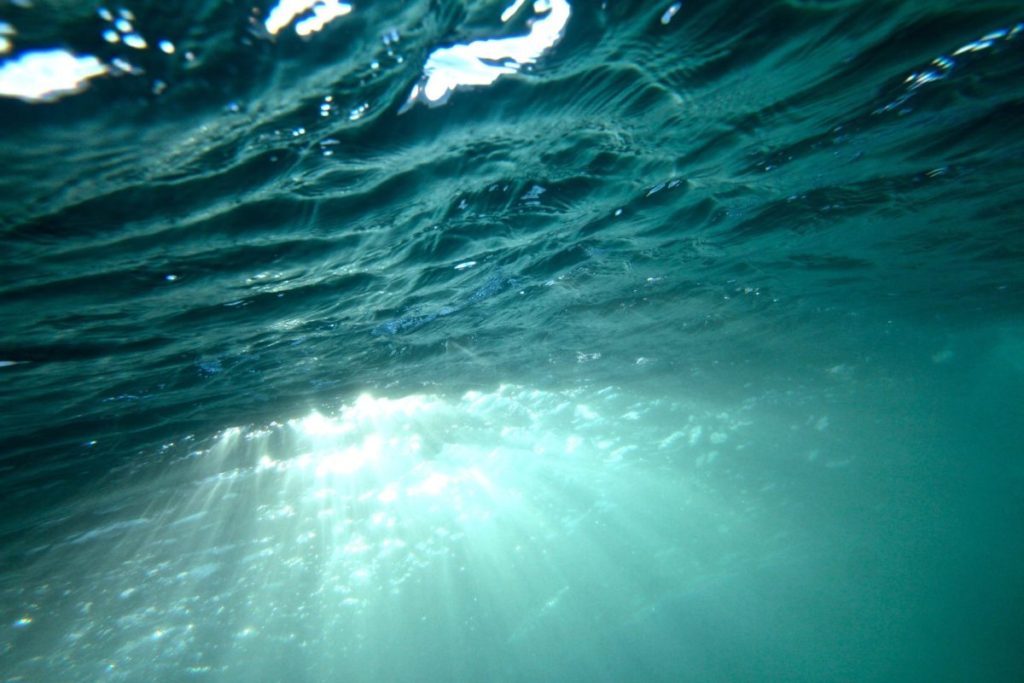More efficient underwater PV cells with wide-band gap semiconductors

U.S. researchers have conducted detailed balance calculations to show the ultimate potential of underwater solar cells. According to their findings, the devices could theoretically produce useful power at up to 65% efficiency in clear waters. However, this would only be possible by using wide-band-gap semiconductors, which have not been considered for solar cells used for land-based applications because their band gaps are too large.

A research team from New York University is trying to assess the potential efficiency limits of underwater solar cells.
In Efficiency Limits of Underwater Solar Cells, published in Joule, the scientists stated that such devices could generate useful power in deep waters. But they noted that wider band-gap semiconductors should be used for the cells instead of the narrow band-gap materials that are used for traditional crystalline PV devices.
Previous results
“Previous attempts to use underwater solar cells to run autonomous systems have had limited success due to the use of solar cells made from silicon (Si) or amorphous Si (a-Si), which have band gaps of 1.11 and 1.8 electronvolt (eV), respectively, and are optimized to function on land,” the researchers said.
Other studies have shown that indium gallium phosphide (InGaP) solar cells, which have a band gap of around 1.8 eV, could be more efficient in producing power at depths as low as nine meters below sea level. However, the devices are still too expensive, in spite of recent progress on cost reductions.
As an alternative, the researchers have proposed the use of organic and inorganic wide-band-gap semiconductors, which are not being considered for solar cells at the moment because their band gaps are too large for land-based applications.
Maximum theoretical efficiency
Crystalline solar cells based on narrow gap semiconductors have a maximum theoretical efficiency of 34%, which is the so-called Shockley-Queisser limit. Indoor solar cells based on organic materials can reach maximum theoretical efficiencies of around 60% when illuminated by light-emitting diodes (LEDs) and approximately 67% when illuminated by sodium discharge lamps, the researchers stated.
As for solar cells relying on wide band-gap semiconductors operating underwater, the scientists estimated that their maximum theoretical efficiency stands between around 55% at two meters to more than 63% at 50 meters. “The large increase of the solar cell efficiency beyond the Shockley-Queisser limit, even in shallow waters (two meters), is due to the narrowing of the transmitted solar spectrum reaching the solar cell,” they explained. “An additional boost in efficiency can be achieved when the solar cells are operated in cold waters.”
The research team said that the optimum band gap of the cell absorber shifts from around 1.8 eV when operated at two meters to approximately 2.4 eV at 50 meters, with a band-gap plateau at about 2.1 eV between four and 20 meters. “We also show that the optimum band-gap values are more or less independent of which waters the solar cell is deployed in, which is highly beneficial from a design perspective, as the solar cells would not have to be tailored to specific waters but rather to specific operating depths,” they said.
Suitable semiconductors
The researchers noted several direct inorganic wide-band-gap semiconductors that could be explored for applications in underwater solar cells. They include hydrogenated amorphous silicon, semiconductors such as copper peroxide (CuO2) and zinc telluride (ZnTe), as well as III-V semiconductors like aluminum gallium arsenide (AlGaAs), indium gallium phosphide (InGaP), and gallium arsenide phosphide (GaAsP).
They added that organic wide-band-gap semiconductors such as rubrene, pentacene and p-phenylene vinylene derivatives could be good candidates for producing such cells. “With the recent development of replacing fullerenes with non-fullerene acceptors to achieve both greater performing organic solar cells and improved device stability, a number of new wide-band-gap semiconductor donor materials have been developed, yielding higher efficiencies than traditional systems that were paired with fullerene derivatives,” the scientists said.
“Since wide-band-gap semiconductors are not conventionally desired for outdoor solar harvesting, the large library of inorganic and organic wide-band-gap semiconductors, currently not considered for land-based solar cells, could potentially be used as absorbers in high-efficiency underwater solar cells,” they concluded.

